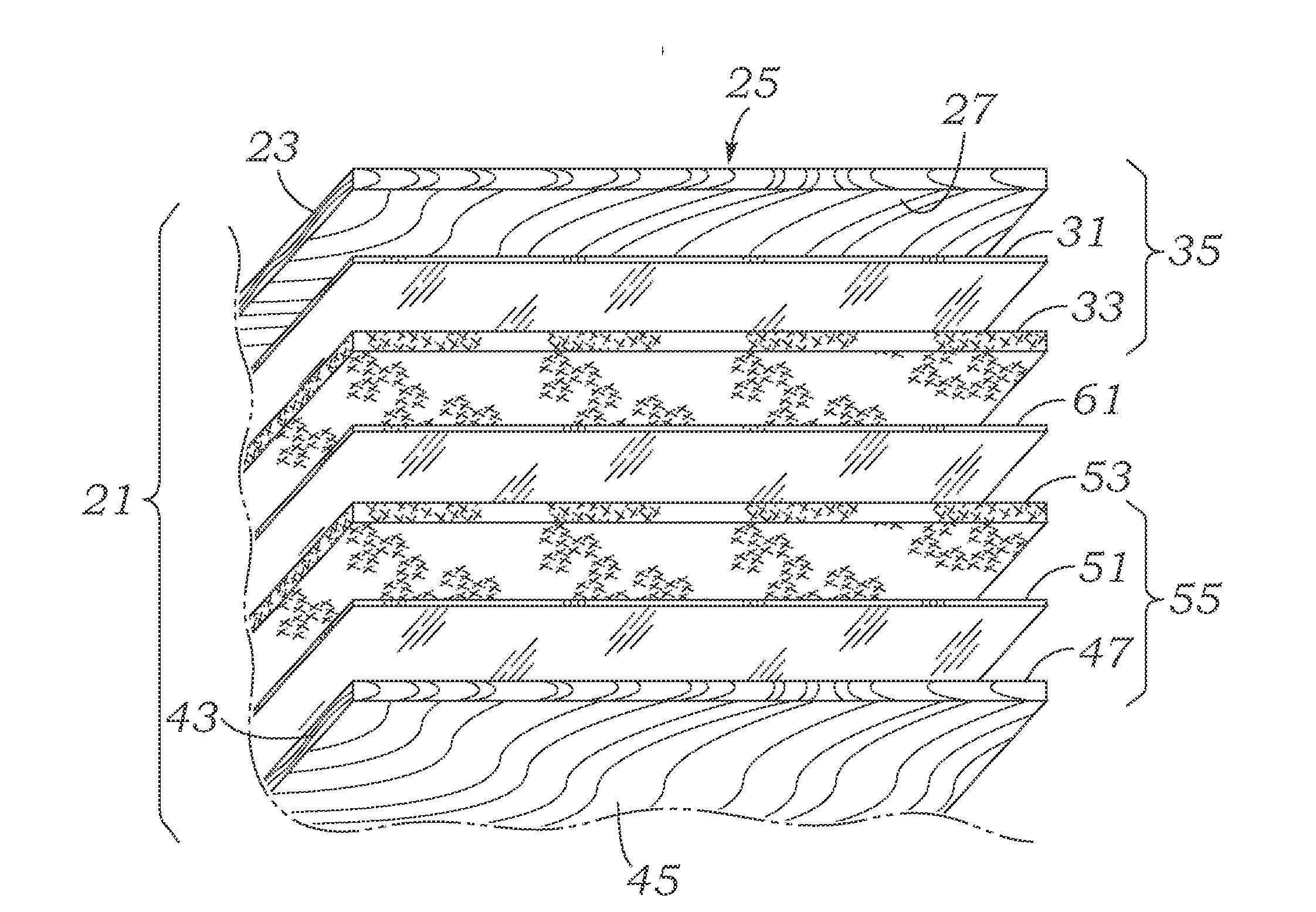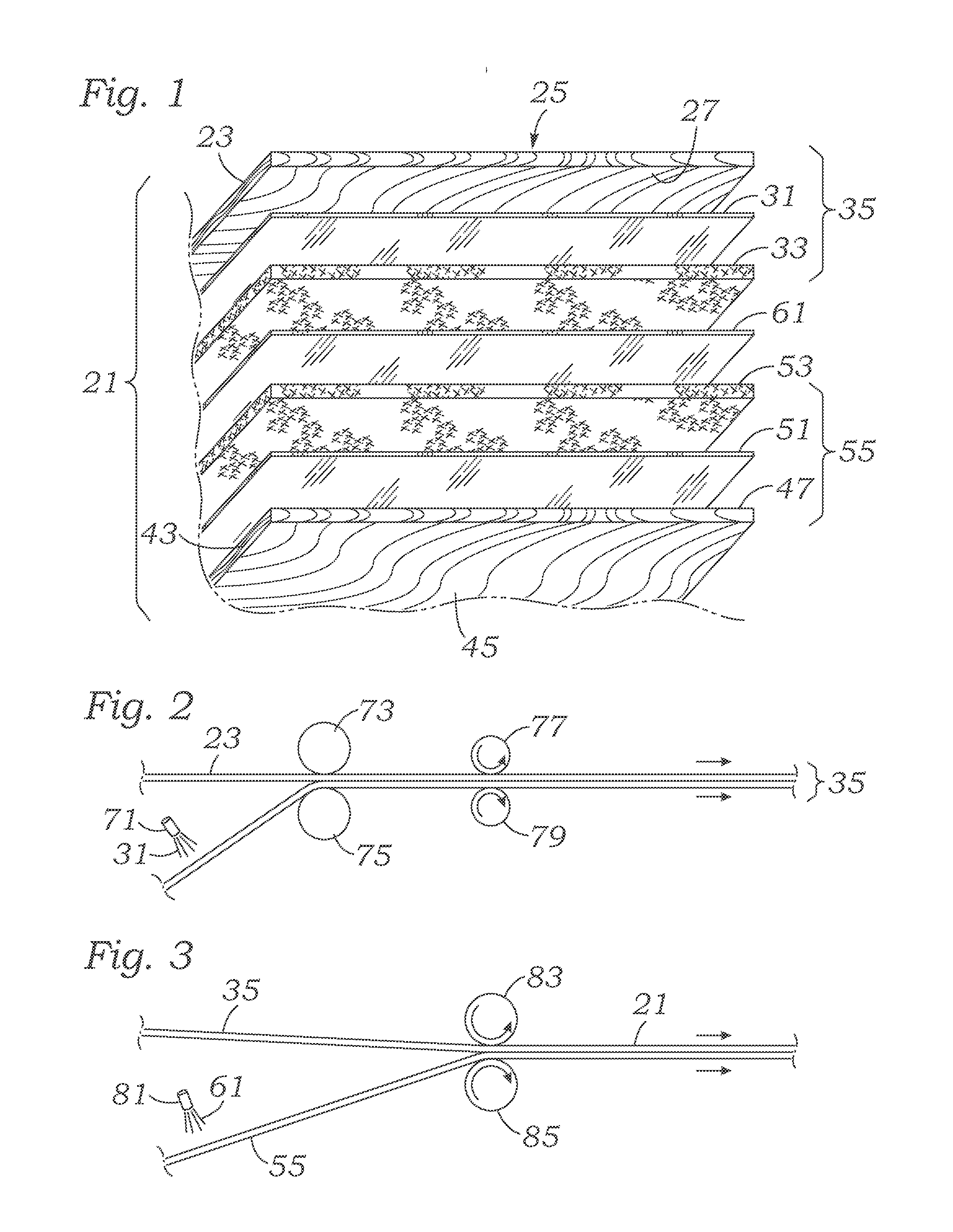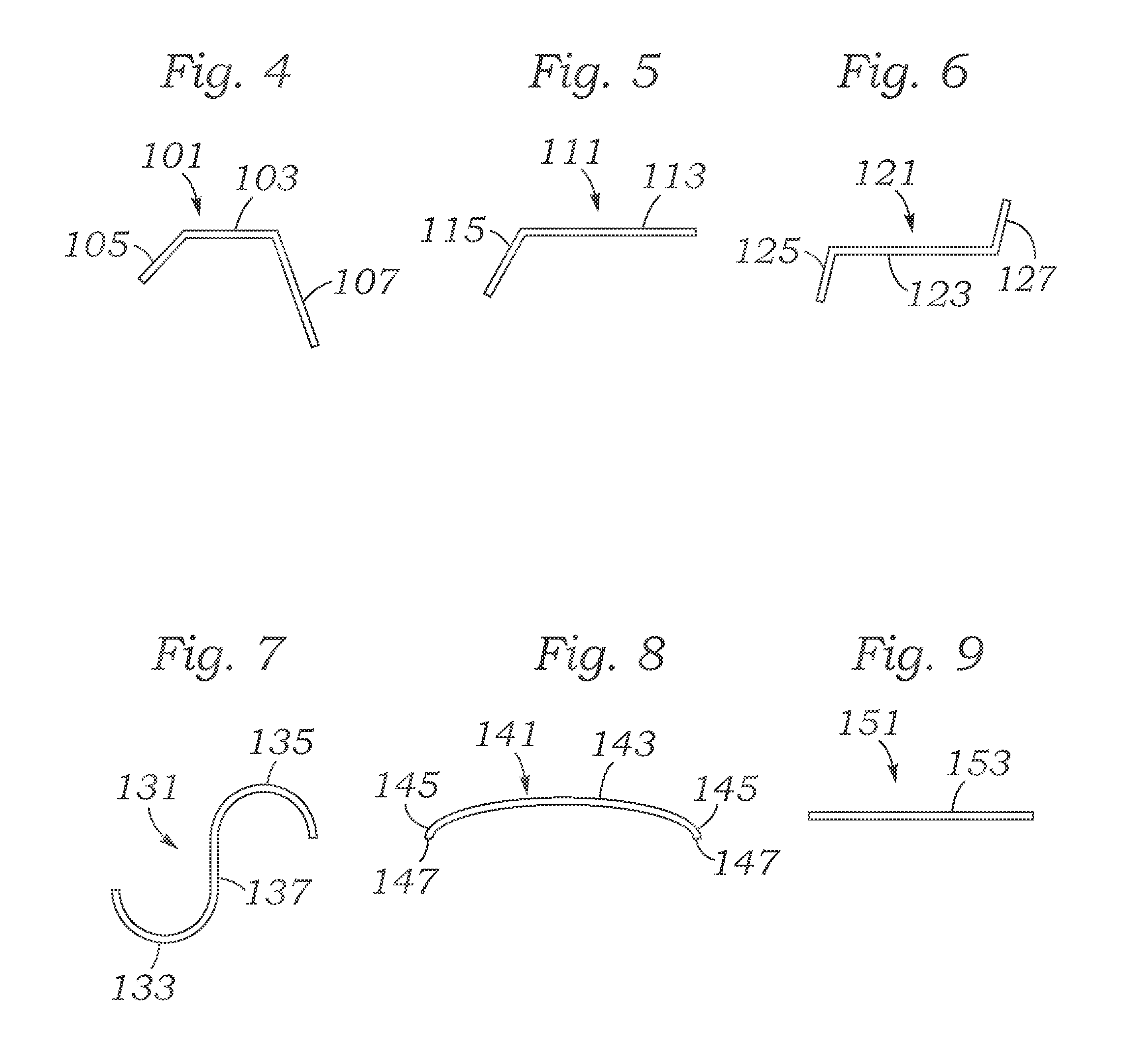Process for slat shaping and shaped slats
a technology of slats and slats, which is applied in the direction of paper/cardboard containers, door/window protective devices, transportation and packaging, etc., can solve the problems of unacceptably high cost, unfavorable quality control, and high cost of metal cores, so as to achieve stable shape variations, reduce cost, and improve quality
- Summary
- Abstract
- Description
- Claims
- Application Information
AI Technical Summary
Benefits of technology
Problems solved by technology
Method used
Image
Examples
Embodiment Construction
[0026]The description and operation of the veneer system and method of the invention will be best described with reference to FIG. 1 which illustrates a perspective exploded schematic view of the an end of a series of materials which illustrates the overall orientation of layers and bonding materials to form a window covering slat 21, and which may be thought of as an exploded view of a window covering slat 21.
[0027]At the top of FIG. 1, a first very thin layer of material 23 is shown which may be a first layer of material 23 having one side 25 (upwardly oriented and indicated with an arrow) which may likely be an exposed, decorative layer of the window covering slat 21 and which will occupy a first main side of the resulting slat. Where first layer of material 23 is made of a thin wood veneer, the side 25 may well be finished to a matte or glossy finish and stained to show the wood grain pattern to a desired effect. Window covering slat 21 may also be finished after it is assembled...
PUM
| Property | Measurement | Unit |
|---|---|---|
| angle | aaaaa | aaaaa |
| angle | aaaaa | aaaaa |
| angle | aaaaa | aaaaa |
Abstract
Description
Claims
Application Information
 Login to View More
Login to View More - R&D
- Intellectual Property
- Life Sciences
- Materials
- Tech Scout
- Unparalleled Data Quality
- Higher Quality Content
- 60% Fewer Hallucinations
Browse by: Latest US Patents, China's latest patents, Technical Efficacy Thesaurus, Application Domain, Technology Topic, Popular Technical Reports.
© 2025 PatSnap. All rights reserved.Legal|Privacy policy|Modern Slavery Act Transparency Statement|Sitemap|About US| Contact US: help@patsnap.com



